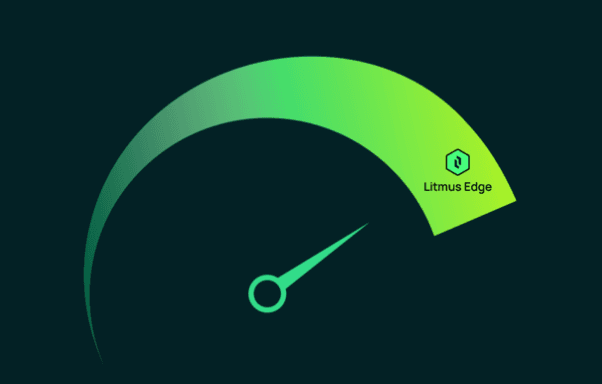Most industrial data projects don’t fail because the vision is wrong—they fail because scaling across 50, 500, or 5,000 sites takes too long and costs too much. Manual installs, environmental drift, and endless maintenance all drag it out. But now, with the new Litmus Edge Helm chart, we’re collapsing that path for better multi-site production. You can now deploy Litmus Edge on Kubernetes in minutes, manage it declaratively through GitOps, and scale confidently with infrastructure-as code (IaC)—all without touching every site manually. This is a force multiplier for Industrial DataOps pipelines and Industrial AI initiatives, enabling faster ingestion, consistent deployments, and CICD for AI models running at the edge without bespoke per-site work.
Fragmented installs slow value: Manual installs, one-off scripts, and environment drift add weeks to every plant or line.
Day-2 is where projects go to die: Upgrades, rollbacks, and security patches across sites are painful without a declarative model.
Scale amplifies complexity: What’s easy for one site becomes unmanageable for 50 or 500 without automation and policy controls.
An official Litmus Edge Helm chart that installs core services and persistent storage—ready for connected and air-gapped deployments—with clear resource, storage, and networking controls.
Two install paths: from our OCI registry or local source.
Air-gapped ready: override image registry, tag, and imagePullSecrets.
Storage you control: bind to existing PVCs or create managed ones; tune size, access mode, and storage class.
Network flexibility: expose a single port or define a multi-port service—container port mappings derived from your service.ports.
Enterprise policy compatibility: explicit capabilities and settings for clusters with Pod Security Standards / Gatekeeper.
From zero to streaming: With Helm 3, Litmus Edge is online in minutes. kubectl create namespace litmusedge-system helm install litmusedge oci://<your-registry>/helm/litmusedge \ --version 4.0.1 \ --namespace litmusedge-system \ --values my-values.yaml
Deterministic ops: Pin chart and image versions; use helm upgrade and helm rollback to promote the exact same artifact from dev → test → prod.
No surprises on storage/networking: Choose PVC strategy and service exposure up front—eliminating on-site guesswork.
This directly accelerates Industrial DataOps—you can standardize connectors, transforms, and schemas per site via values.yaml, and ship updates by pull request instead of change-window heroics.
The chart is a contract for consistent, auditable deployments:
Git as source of truth: Keep per-site values.yaml in a repo; Argo CD or Flux syncs clusters to the desired state. Drift is detected and self-healed.
Promotion pipelines: Publish the chart to OCI; promote with environment-specific values.
Air-gapped IaC: Mirror images to your registry and commit updates to Git; clusters reconcile on-site.
Policy-aware by design: Codify exceptions and security posture once and reuse everywhere.
This is where Industrial AI gets real. Your MLOps flow can roll out edge AI models (e.g., vision or anomaly detection) by updating model images/tags in Git and letting GitOps fan them out safely across plants.
apiVersion: argoproj.io/v1alpha1
kind: Application
metadata:
name: litmusedge
namespace: argocd
spec:
project: default
destination:
server: https://kubernetes.default.svc
namespace: litmusedge-system
source:
chart: litmusedge
repoURL: oci://<your-registry>/helm
targetRevision: 4.0.1
helm:
valueFiles:
- values/litmusedge/plant-a.yaml
syncPolicy:
automated:
prune: true
selfHeal: true One click (or one commit) becomes a fleet rollout with automated drift correction—exactly what multi-site programs need.
Immutable desired state: Git history + signed images (optional) make changes auditable and reversible.
Least-privilege by default: Narrow capabilities and explicit settings surface early; use PSP/PSS/OPA policies consistently via IaC.
Air-gapped discipline: Private registries + imagePullSecrets harden supply chains and reduce outbound dependencies.
Fewer hands on prod: GitOps reduces SSH/jump-box access, shrinking attack surface.
For regulated plants, this model aligns with “change by pull request,” giving security and plant IT a transparent control point.
- 1.
Fast time-to-value: Minutes from cluster to Litmus Edge; simple rollbacks keep pilots moving.
- 2.
Operational consistency: Config-as-code and GitOps enforce one way of working across all sites.
- 3.
Scale without surprises: Clear resource, storage, and port behaviors eliminate per-site improvisation.
- 4.
Security posture improves: Version-pinned artifacts, policy codification, and fewer manual touches.
- 5.
AI-ready edge: Standardized path to deliver and update Industrial AI models at the edge as part of normal releases.
- 6.
DataOps acceleration: Reliable, repeatable deployments for connectors, transforms, and feature pipelines.
Green-field pilots: Start with the default chart and a minimal values.yaml; prove value in days, not weeks.
Brown-field estates: Model storage classes, node placement, and port exposure per site with per-plant values files.
AI/ML at the edge: Treat model containers like application releases—promote versions, roll back safely, audit in Git.
Regulated sites: Mirror images internally and codify imagePullSecrets and policy exceptions once; reuse everywhere.
We’re expanding the chart with opinionated profiles and site templates to standardize even faster. In the meantime, Helm + GitOps + IaC gives you a clean runway from PoC to global scale—unlocking the outcomes customers care about most: faster uptime, lower cost to serve, stronger security posture, and a production-grade path for Industrial DataOps and AI at the edge.
